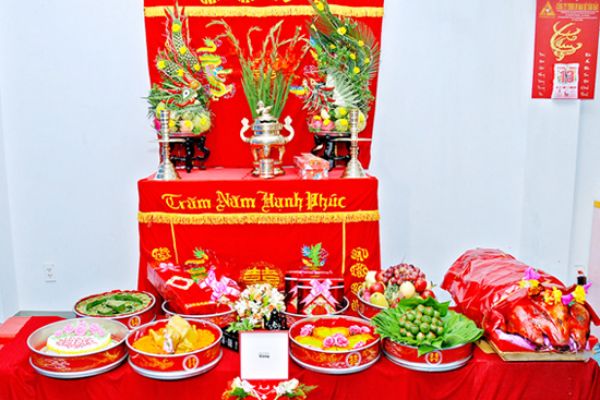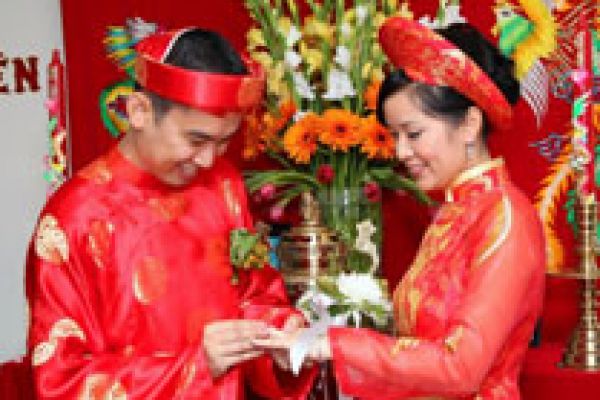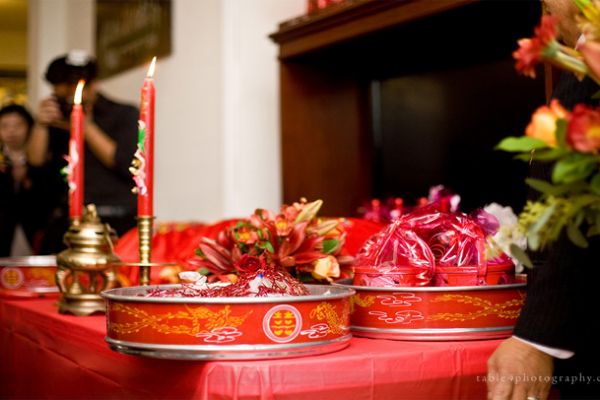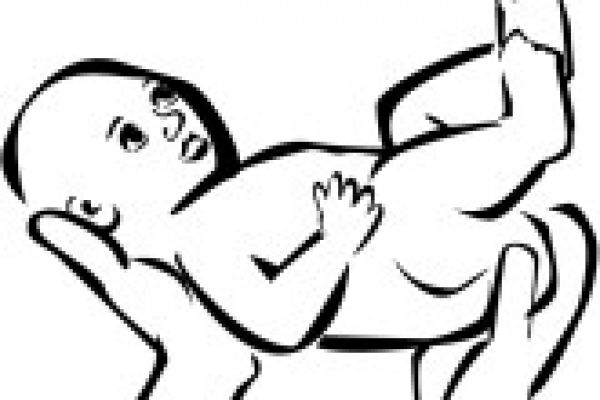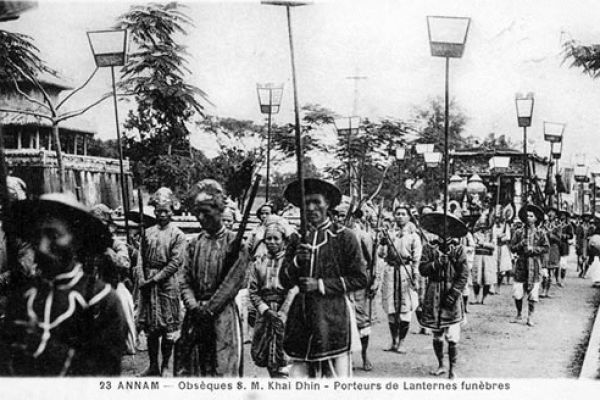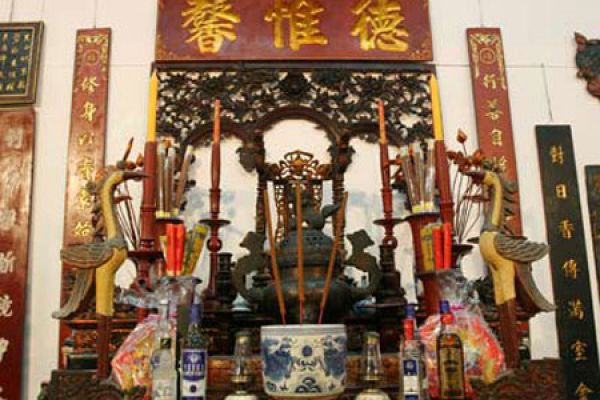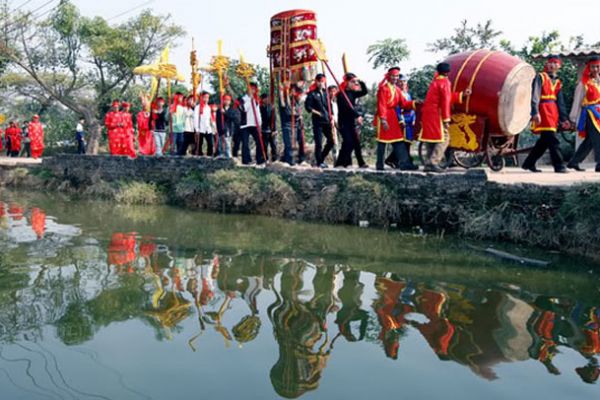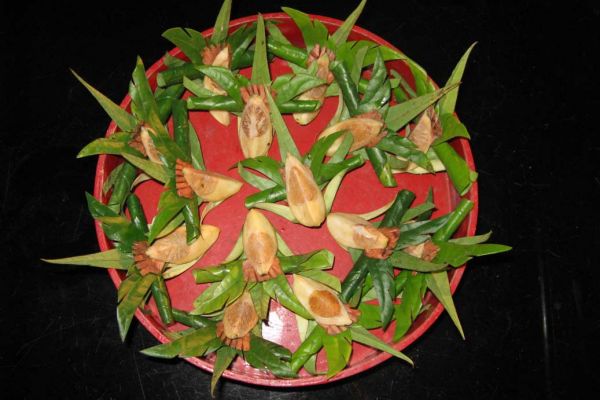In 1992, Phan Dinh Pho, the former keeper of Great Tutor Le Van Thinh’s Temple in Bac Ninh Province happened upon a rock jutting out from the ground in front of the temple.
Pho, who passed away in 1993, removed some dirt and stones around the rock and found that it was carved, so he asked villagers to dig it up. They surprisingly unearthed a stone statue of a creature with features resembling a traditional Asian dragon replete with scales, clawed feet and fangs.
The statue, however, has a very unusual features which have never appeared in Chinese or Vietnamese dragon depictions before.
The animal and its thick scales are carved out of a whole rock. Its front legs are stretched out, with 10 toes with sharp claws to its body. The head, with staring eyes, droops while the mouth is wide open, with rows of pointed fangs biting its trunk. The right ear is filled in but the left ear is empty.
The overall image generates a sense of extreme agony and pain.
The three-ton statue was named “Master Dragon” by locals and has since been worshiped at an altar beside the temple.
Tiger tutor
The “Master Dragon” statue was found at the temple of Le Van Thinh, Vietnam’s first doctor who was famous for being talented in many fields.
Thinh, a resident of Dong Cuu Hamlet of Gia Dinh District (now Bac Ninh Province’s Gia Binh District), was the top graduate in Vietnam’s first official examination held in 1075 under King Ly Nhan Tong’s reign and was invited to work as an army official. He was then promoted to the position of Thai Su (Great Tutor) in 1085 and held it for 12 years until the legendary case of “Tiger transformation” occurred.
This case was written up in the 15th century Dai Viet Su ky Toan thu (The Complete Book of the Great Viet’s History). The book said Thinh turned into a tiger to attack the king during a cruise in a boat around West Lake. He was captured by a fisherman and subsequently exiled by the ruler.
It is said that on his way home from exile, Thinh passed away at To Temple in Bac Ninh Province’s Thuan Thanh District and was worshipped as the village’s patron god. His tomb remains there today.
Although accused of treachery and NG SON assassination by the court, Thinh was still respected by the people and was worshipped in many parts of the north as a patron god.
The truth of the incident has remained a mystery until the present day but most modern Vietnamese historians believe the case was a scheme against Thinh by his political opponents.
Experts’ perspectives
The dragon statue has been considered by some locals and experts as an artwork displaying the pain and silent anger endured by Thinh because of his unjust treatment.
“The dragon statue found at Great Tutor Thinh’s Temple is probably the image of a person portrayed as one who failed in political affairs and suffered great pain,” art critic Phan Cam Thuong said. “It is Great Tutor Thinh.”
The statue, Thuong says, could have been made in the post-Le Dynasty (15th century) era based on its correlations with other stone relics from the period found in Bac Ninh Province.
Others believe “Master Dragon” is the image of King Ly Nhan Tong, showing his pain because he had listened to only one side – depicted by one closed ear and one open ear – and wrongly punished Thinh who was an upstanding mandarin and the king’s own teacher.
Ta Chi Dai Truong, a Vietnamese historian living in the US, holds a contrasting view. He claims it is necessary to examine the statue as a separate work of art and not tie it to Thinh’s case because doing so would place a real object within a mythological context.
Vietnam National University of Hanoi University of Social Sciences and Humanities lecturer Nguyen Hung Vi, who has spent years studying the historical background of Great Tutor Thinh, asserts that “Master Dragon” is an exclusive statue.
The work belongs to the Ly Dynasty or a much earlier period instead the post-Le Dynasty, according to Vi, who added “I don’t believe this is an image that symbolizes Great Tutor Thinh or King Ly Nhan Tong.”
The statue continues to draw attention from the public and many experts in fields of art, history and archeology who yearn to solve its mystery.
Reported by Cam Linh – Tr. Son

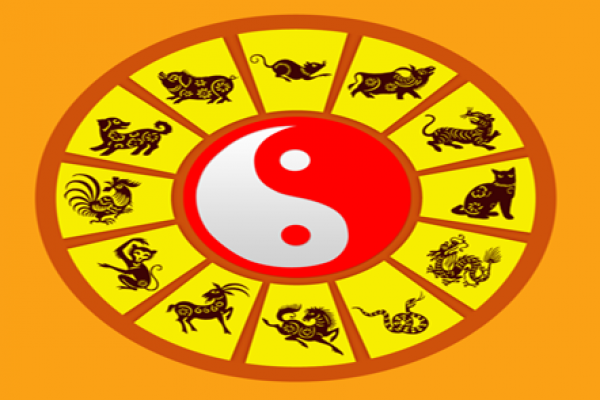
.jpg)

